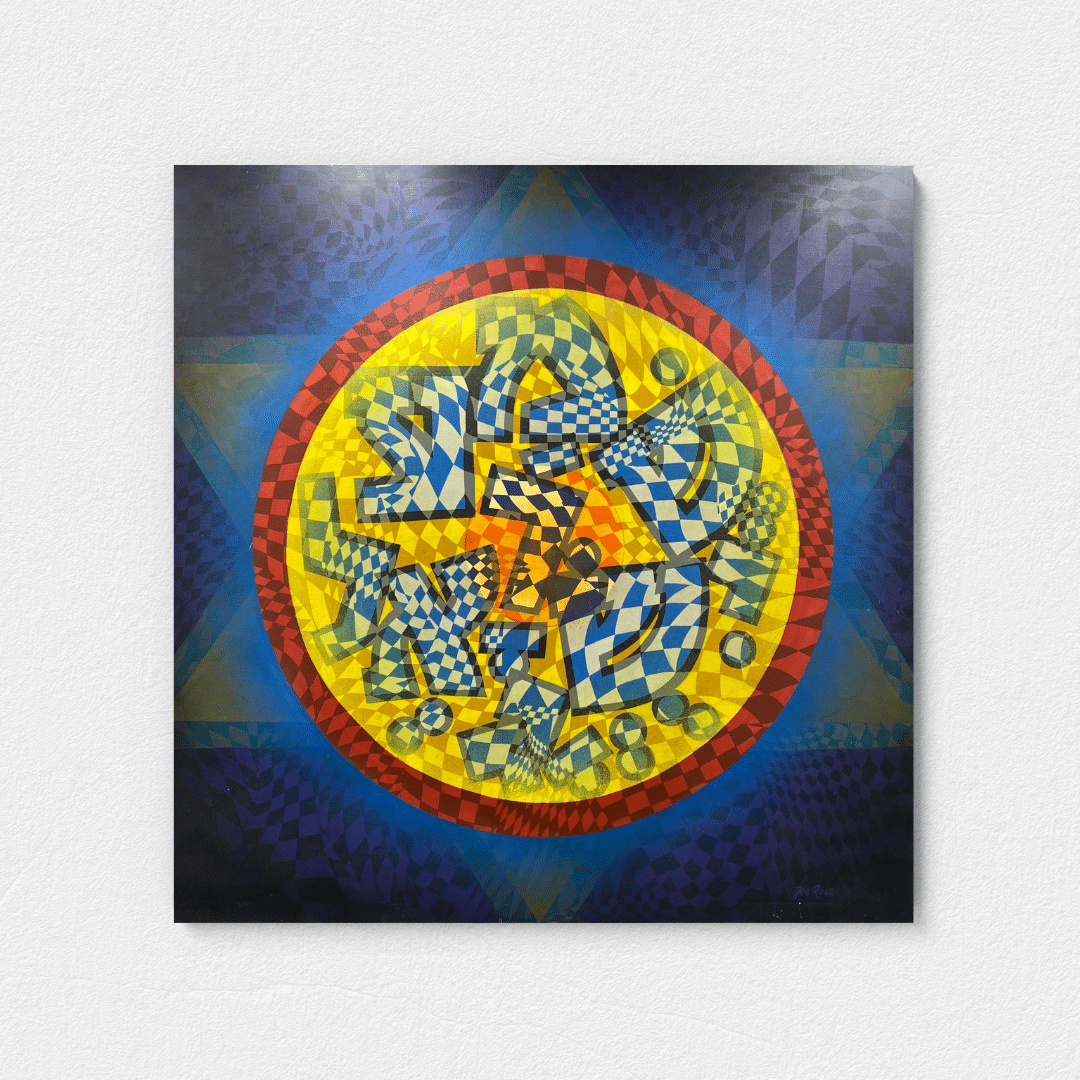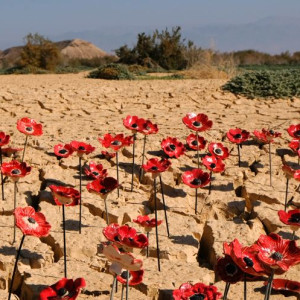Blog
May 8, 2023
A survivor, an artist and a mystic
This untitled and undated artwork in our collection, likely from the 1970s, is marked by its swirling Hebrew letters and primary colours.
It contains deeply religious elements, using letters from the words of the Jewish morning and evening prayer, “Shema Yisrael” or “the Shema” – the central affirmation of Judaism, expressing the belief in monotheism: that there is only one God. This is the first prayer taught to a Jewish pre-school child and the last words uttered by observant Jews before departing this world.
The letters are animated with an illusion of motion, within a circular eye or celestial sphere, whirling inside a static Star of David. The colour blue might reference water.

Untitled artwork by Joe Rose. SJM Collection.
The artist, a Holocaust survivor named Joe Rose (Hans-Joachim Rosenberg), was not deeply religious, according to his daughter, but he was “spiritual”.
Rose, who was born in Germany in 1915, was the only member of his family to survive the Holocaust. Both of his parents and his sister were murdered in Auschwitz.
At the age of 18 in 1933, he was imprisoned in Sonnenburg concentration camp in what is now Poland, as a result of anti-Nazi activities. His artistic abilities would quickly help secure his release.
In 1938, three days after he and his wife Regina were married, Rose was again arrested and this time incarcerated in Buchenwald, a concentration camp in Weimar, Germany. He was fortunately again released, and escaped with his wife to England shorty after.
In the UK, he found refuge in Kitchener camp near Sandwich, Kent, a place that housed male Jewish refugees from Nazi Germany. Regina found a position as a domestic worker. He went on to join the British army and served in the Pioneer Corps, where he worked in the stores sorting supplies for the troops. The pair had two children.
Rose studied art and gained a diploma from the International Correspondence School. At first, he struggled to earn a living.
He said of this time in his life:
“No one wanted to give me employment because I spoke with an accent.”
Eventually, he became a display manager for Vogue, a window dresser, a display artist for department stores, and a sign painter. This experience probably explains the graphic design elements in many of his paintings.
In 1957, the family emigrated to Australia, and it was here that Rose would pursue his ambition to become a fine artist.
He took private art lessons with the well-known Jewish artist Maximilian Feuerring.
“Then I forgot what I learned and started my own style”, the artist described in his Shoah Foundation testimony.
Though he painted in a variety of styles, Rose preferred to be viewed as a mystic exploring the unexplorable.
During the 1960s he had exhibitions and entered many competitions, receiving 26 awards – 11 of which were first prizes. His work was hung in the Archibald, Wynne, Blake and Sulman prizes. In 1971, he was awarded the coveted British Empire Medal for Services to Art (BEM).
Rose died in Tasmania in 1999.
His first paintings were “very black” and “full of bones”. He said:
“It took me a few years till I worked everything out of my system.”
From paintings of the Warsaw ghetto to a painting in memory of his father, a German soldier in World War I, who was murdered by the Germans in World War II.
The depiction of a red rose (arising from his name) features in some works. He also painted portraits, numerous paintings featuring the letters of the Hebrew alphabet and exploring aspects of the Kabballah (Jewish mysticism) – something that he became fascinated with on a visit to Jerusalem.
What do you read in the meaning of this artwork, and its uniquely kaleidoscopic arrangement of checkerboard patterns?






What’s On Newsletter
Keep up to date on all Museum events and exhibitions.